LITTON CHENEY FRIENDLY SOCIETY
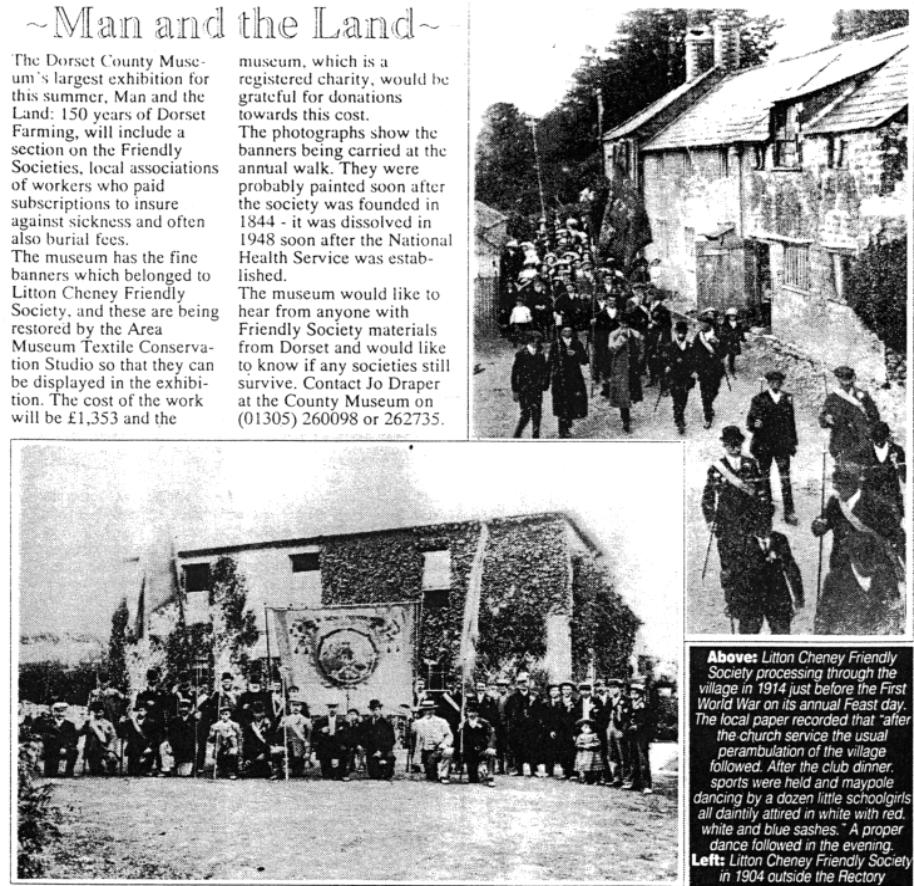
FROM THE LONDON GAZETTE, 16 DECEMBER, 1949
Friendly Societies Act,1896
Advertisement of Dissolution by Instrument.
NOTICE is hereby given that the LITTON CHENEY FRIENDLY SOCIETY Register No.121 Dorset held at The Rectory
Schoolroom, Litton Cheney, Dorchester in the county of Dorset, is dissolved by Instrument, registered at this Office the 12
th
Day of December,1949, unless within three months from the date of the Gazette in which this advertisement appears
proceedings be commenced by a Member or other person interested in or having any Claim on the funds of the society to set
aside such dissolution, and the same be set aside accordingly.
Dated the 12
th
day of December 1949 .
B.K.WHITE,Chief Registrar.
17, North Audley Street,
London, W1
HISTORIC ARCHIVE
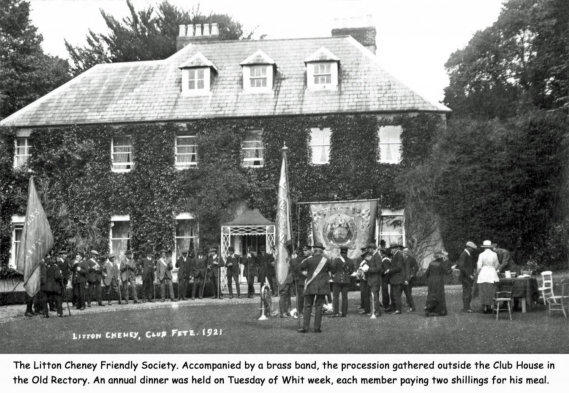

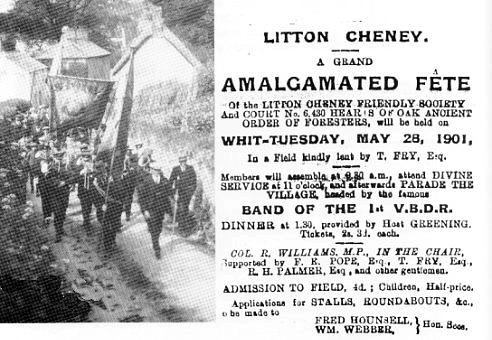
END OF AN ENTERPRISE
The Passing Scene - Last Walk of a Dorset Club
Memories Recalled at Litton Cheney
Founded in 1844, the Litton Cheney Friendly Society, which annually held its annual club fete on Whit-Tuesday, has ended its activities. With
the State health scheme in action membership had dropped to twenty and it was generally felt that the time had arrived for the Club's legal
dissolution. Inspired by Lieut.-Col. C. R. Wordsworth, of Baglake, members and old established families, in whom traditions were firmly rooted,
decided that, before dissolution, the Club should walk again with banners flying and band playing as in the good old days. Thus it came about
that on Saturday afternoon the Litton Cheney Friendly Society held its Club Walk for the last time and villagers and visitors looked with deep
regret upon a procession which it is extremely unlikely will ever again be seen in the streets of this lovely unspoilt village. Old established
families decorated their houses with flags, the large standard floated from the church tower and merry touches were rung upon the ring of six in
St. Mary's tower. Mr. C. Fry was responsible for displaying the cerise and blue silk banner of the Society by the church font and putting the blue
and gold standards one each side of the archway leading to the chancel.
END OF AN ENTERPRISE
The afternoon service at St. Mary's Church was conducted by the Rector (Rev. Canon E. S. Daniell), and the Lesson was read by Rev. C. W.
Wright, rector of Longbredy. Miss Olive Gladwyn (hon. secretary of the Friendly Society). was the organist. The sermon was preached by Rev.
R. D. St. G. Edwards, sometime rector of Longbredy and treasurer of the Society for the last 32 years, who had come from Berkshire to be
present. Their Society, he said, was years ahead of its time in its ideals, many of which were now incorporated into the State scheme, which
rendered the village organisation unnecessary and, therefore, it had now reached the end of its usefulness. After the service the splendid
banner and the two blue and gold silk standards, dated 1844, were borne from the church, past the grave of the Rev. J. Cox, a founder and a
procession was formed. Leading the procession, as of old, was Mr. Arthur Gladwyn, for 17 years hon. secretary of the Friendly Society, who had
specially come from Wimborne for the final ceremony. He was wearing his blue official sash. His grandfather, the late Mr. James Gladwyn, was
a founder member. The leading standard was borne aloft by Mr. Fred Dennett. The banner was carried by Mr. M. Thorner and Mr. W. Pile and
the second standard by Mr. F. Burt. The Winterborne Whitchurch Brass Band was in attendance and a number of Club members and young and
old inhabitants and old Littonians made up the procession. Among the members wearing regalia and carrying their Club Poles were Messrs.
William Travers. William Pile, M. Thorner, G. Thorner, F. Burt and C Greening. Messrs. C. Fry and A. Trevett carried their late fathers' Club
Poles. JOURNEY'S END
"Zoo off they started, two an' two,
Wi' painted poles and knob o' blue,
an' girt silk flags”.
With the band playing stirring tunes, the procession marched, as of old, along the church path, up Redway, by the old Cross Tree, on through
Puddlehole to Baglake, the home of Lieut.-Col. C R. Wordsworth and where once lived that fine yeoman farmer, the late Mr. Thomas Fry, a
staunch supporter of the Club in his time. Retracing their steps, the Club Walk continued down the main street. The thoughts of many, as they
Passed the Green, were of the triumphal arch which, for many Whit-Tuesdays, spanned the road, erected by the late Mr. George Fry, the last
man to be seen wearing a smock frock in the village. Down to the White Horse Inn and to the White Cross Bakery, where once upon a time the
late Mr. Samuel Moores, originator of the knob biscuits famous the world over, made them by hand, 42 to the pound. Turning about, the last
Club Walk, with band playing and colours flying, went up the street with its silver streams on either side, back to the church steps, journey's
beginning and journey’s end alike for generations of folk and for the Friendly Society's Club Walk too. The banner and standards were
reverently placed, prior to laying up, on the Rectory lawn. A welcome tea was enjoyed in the Rectory Sunday Schoolroom, provided by Mrs. Fry,
Mrs. A. Trevett, Mrs Honeybun, Mrs Hiscock. Mrs. Han and Miss Olive Gladwyn (Friendly Society hon. secretary). A general meeting followed
attended by the trustees (Lieut. -Col. C. R- Wordsworth, Canon E. S. Daniell, (Canon Trotman was unavoidably absent) and members. Rev. R.
D. Edwards (treasurer) was unanimously voted to the chair. The necessary steps were taken to procure the legal dissolution of the Society. It
was unanimously decided that the Club regalia be kept in the village. Various suggestions were put forward for its safe keeping and a final
decision will be made when the Club closes down and shares out its funds in October. All then went to the Court House where, by kind
permission of Mr. C. H. A. Newman, the band played selections on the lawn, with dancing and time honoured skittling to occupy the evening. So
ended Litton Cheney Friendly Society's last Club Walk, which now passes into history, along with its 13th century wake, with adjoining
Puncknowle's September veast, Burton Bradstock’s veast and perhaps Litton Cheney's famous mumming play "Crimea."
A friendly society is a mutual association for the purposes of insurance, pensions, savings or co-operative banking. It is a mutual organisation or
benefit society composed of a body of people who join together for a common financial or social purpose. Before modern insurance and the
welfare state, friendly societies provided financial and social services to individuals, often according to their religious, political, or trade
affiliations.
The Litton Cheney Friendly Society was in existence from 1844 until 1948. The annual anniversary was celebrated every Whit-Tuesday with a
church service and, with banners flying and the band playing, a procession around the village stopping at various watering holes for
refreshments. A sumptuous dinner was provided for members of the Society followed by games and dancing into the evening.
A regular account of the proceedings was published in the local newspapers, some of which can be read here.
NOTABLE VILLAGE EVENTS
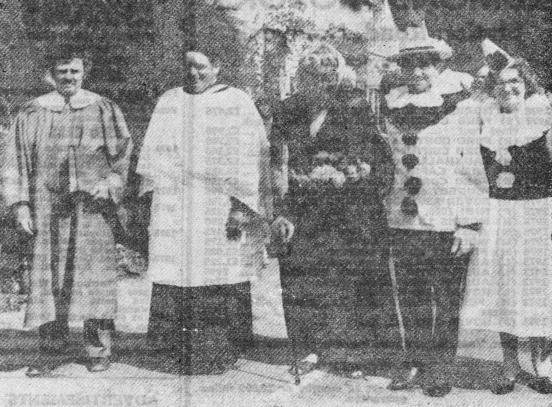
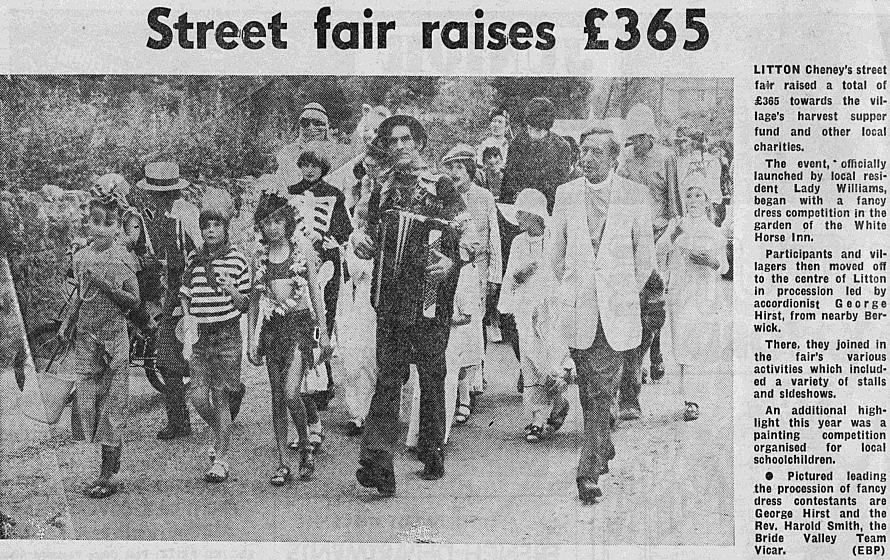
Rev. Harold Smith
George Hurst
Katherine
Hallett
Becky
Wright
Bill Kingston
Wyn Smith
(wife of Rev. Harold)
Rev. Harold
Smith
Hugh Lindsay
Carole Lindsay

Ray (Grizzly)
Wright
Roger
Gaines ?
1979 Street Fair
1981 Street Fair
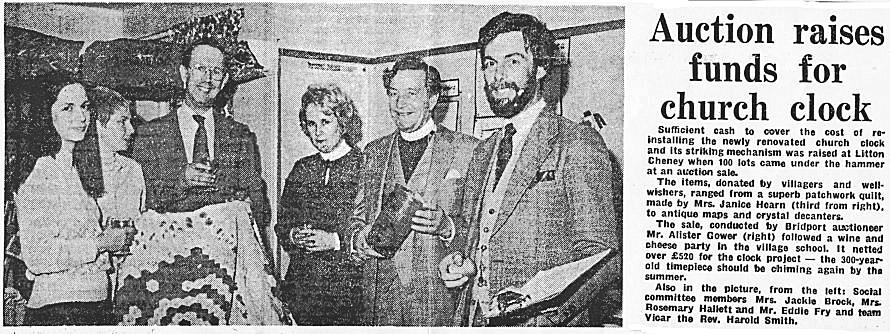
1982 Auction
Rosie
Hallett
Jackie
Brock
Eddie
Fry
Janice
Hearn
Rev. Harold
Smith
Kim Stowe

A browse through the archives of the local press, Bridport News, Western Gazette and the, now defunct, Dorset Chronicle, reveals some
interesting stories about life in Litton Cheney during the last two centuries. Articles on the annual fetes of the Friendly Society, which were
published, in glowing terms and at great length, for many years, are dealt with separately HERE. Other stories, from 1826 until 2018 have
been collated in the following files.
LITTON CHENEY IN WARTIME
For Litton, as for the country generally, the First World War was somewhat remote, only materially affecting the village in its demand
for men (nine were killed), shortage of food and the struggle to increase the agricultural output.
A detailed diary of the first world war in Litton Cheney can be read here
Those with memories of 1914-18 soon realised in 1939 that this time things were going to be very different. In the first eighteen
months the threat of invasion loomed large.
The nucleus of the troops’ billets were 28 Nissen huts in the two fields east of the school (there were then no houses in the lane,
other than the schoolhouse). This was supplemented by the taking over of the bams at the Rectory and at Court House. The Youth
Hostel (as popular during the 1930s as it is today) became a sick bay and general H.Q. office. The buildings and yard of Cross Tree
Farm (where Moxom’s factory was) was commandeered for workshops and stores and a general assembly area. The Foot family
who owned the farm continued to run it from their other farm at Long Bredy.
Litton, in fact, was to become the centre of training for a succession of units both British and American for four years. The 8th
battalion of the Essex Regiment was stationed in the area and had its H.Q. in the village. The 257th Battery, Royal Artillery, trained
here before active service and many of that unit lost their lives at Dunkirk. The entry of the U.S.A. into the war brought American
troops into the area which became involved in the preparation for the D Day landing in Normandy. Litton had a distinguished visitor
in 1943 when General Eisenhower, the Allied Commander in Europe, decorated men who had come back from the invasion of Italy.
The investiture took place in Cross Tree farmyard but for security reasons did not become generally known until after it had taken
place..
One must not forget the Home Guard. Both Litton and Long Bredy had small platoons right from its early days, generally under the
command of officers or N.C.O.s who had First World War experience. Gradually, through 1940 when invasion seemed imminent, it
gained in organisation and efficiency so that by 1944 it was considered part of the line of defence. One can however, remember
experiences of those early days such as being taken to Kingston Maurward to fire two rounds from a rifle “to get the feel of it”. For
the Home Guard platoons the invasion scare in 1940 meant assembling in the evening in Puncknowle school, each with just one
clip of five rounds for his rifle, ostensibly to back up the regular units defending the beach.
With the successful invasion of Europe, troops were gradually withdrawn from the south coast area and the Bride Valley no longer
had the visitors it had entertained for almost four years. In Litton. The camp in School Lane was demolished save for the two
Nissen huts which had been the sergeants’ mess. These were to serve the school as a kitchen and dining room for another 23
years. The fine bam in the grounds of Court House had, however, been burnt down never to be rebuilt. Litton gradually regained its
peacetime calm but of those who served five did not return, their names being added to those on the 1914-18 memorial in the
churchyard - details here






Village Information v
Local Amenities v
Village Amenities v
About Litton Cheney v
Dorset Council v
Parish Council v